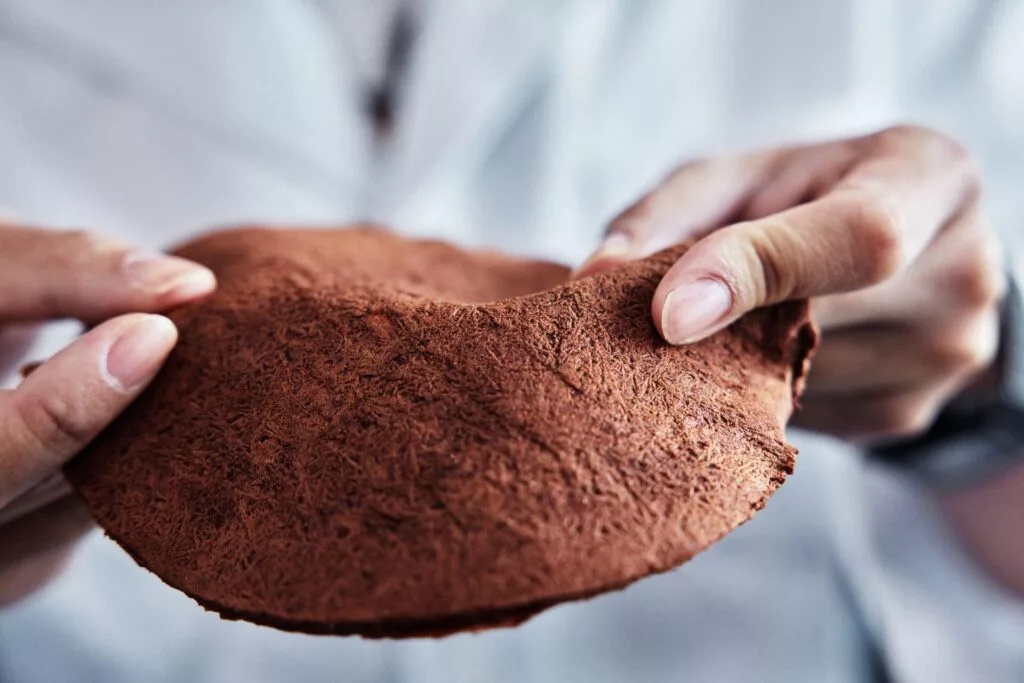So-called "bonded leather" is really just leather fibers mixed with eco-unfriendly polyurethane or polyvinyl chloride. reProLeather, on the other hand, converts leather waste into what is claimed to be a recyclable, biodegradable, new-leather-like material.
The technology is being developed by scientists at the Hong Kong Institute of Textiles and Apparel, with support from Sweden's H&M Foundation.
Here's how the conversion process works …
Initially, post-consumer leather goods are thoroughly shredded, rendering the leather down into collagen fibers (collagen is the main component of leather). Next, the toxic free chromium which was used in the production of those goods is removed from the fibers by converting it into a soluble salt.
The resulting purified fibers are then mixed with unspecified sugars and/or proteins under mild conditions, after which the gelatinous mixture is spread out into the form of a sheet. Another sheet, described as a protein fiber skeleton, is laid onto the mixture as it dries and cures – while this is happening, the cellulose fibers interconnect with one another.
The final product is claimed to have the look, feel and structure of new leather, along with enough strength for it to be utilized in the same sort of products. And unlike traditional bonded leather made with synthetic binders, it can reportedly be broken down and recycled, or left to biodegrade in the environment if discarded.

It is hoped that once the technology is developed further, it will both reduce waste and minimize the need for virgin leather to be obtained by slaughtering cattle.
Sources: Hong Kong Institute of Textiles and Apparel, H&M Foundation




